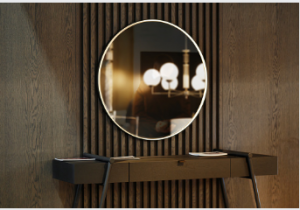Types of Mirrors
There are different types of mirrors. Some are made of glass, while others are made of metal alloys. This article will teach you about the different types of glass, metal alloys, and Silica. You will also learn about Dielectric coatings. The material that makes up a mirror is essential.
 Metal alloys
Metal alloys
Mirrors can be manufactured using a variety of metal alloys. These metals exhibit various properties, including high reflectance and hardness. They can also exhibit unique microstructures such as nano-grains and quasi-crystallinity, and they can be cast into a net or near-net shape without machining. Visit here for more details http://www.unleyglass.com.au/adelaide/glazing/main/mirrors-adelaide-unley-glass-adelaide/.
One of the most commonly used metal alloys for mirrors is MoldMax, a copper-nickel alloy with tin. Its high heat conductivity and hardness make it a popular choice for making optical mirrors. This metal alloy is available in round, square, and rectangular bars and plates. In addition, it can be chemically brightened by washing with sulfuric acid under a fume hood.
Glass
Mirrors are optical devices that reflect light in a specific direction. The type of mirror that is most suitable for a given application depends on the reflectivity of its material.
Mirrors can be made of glass or metal. They are most often produced by vacuum deposition. This technique dates back to the observation that metal ejection from gas discharge lamps condenses on glass walls, forming a reflective coating. As semiconductor technology advanced, this technique was refined into a more industrial metal-coating process. Mirrors can be further classified according to their support material and shape. Visit here for more details http://www.unleyglass.com.au/adelaide/glazing/main/mirrors-adelaide-unley-glass-adelaide/.
Mirrors have been around for thousands of years. While the first mirrors SA were made of metal, modern mirrors are made of glass with a thin metallic backing. Mirrors are widely used for self-inspection and in various applications, including dentistry and dental care. Mirrors are also widely used in optical apparatus and scientific instruments.
Silica
Silica mirrors are made of fused silica fibres. The fibres have a diameter of a few hundred um. The optical properties of these mirrors are similar to those of a conventional crystalline mirror. They are very durable and resist laser damage well. The main drawbacks of all-silica mirrors are the scattering losses and surface roughness.
One way to improve their performance is to fuse them. This process reduces the amount of water they hold, making them translucent. However, the process can produce air bubbles in the material. In addition, flame-melted materials always contain a high percentage of water.
Dielectric coatings
The use of dielectric coatings on mirrors improves their optical properties. These coatings can reach nearly 100% reflectance while providing high light transmittance and heat resistance. Dielectric mirrors can be made on either plane or curved surfaces. Curved surfaces are best for focusing light, though small radii can cause coating stability problems. In addition, the angled incidence of light causes a longer optical path length. Therefore, it is essential to push the reflection features toward longer wavelengths.
Dielectric coatings can be layered to improve the reflectivity of metal mirrors. The first layer of the metallic mirror has a low index, and the last layer has a high one. These mirrors are often referred to as enhanced reflectors. Adding dielectric layers to a mirror can also improve its durability and reflectivity. For example, an enhanced aluminium mirror may contain four alternating layers of silicon dioxide and titanium dioxide.
Engineering tolerances
Engineering tolerances for mirrors SA are essential in optical systems. These tolerances are defined in the design of the optical system. For example, the Ritchey-Chretien telescope’s tolerances are determined by measuring the root-mean-square random surface wavefront error and the alignment error between the primary and secondary mirrors. These parameters are generally well-specified during the design process.
Tolerancing of optical components is essential because it influences performance and cost. Tolerancing is usually much tighter for optical components than mechanical ones. In addition to the centre-thickness tolerance, there are other tolerances for optical parameters. One is the diameter tolerance, which specifies the maximum allowed diameter for an optical component. Although the diameter tolerance does not impact the optical performance, optical components must be mounted.
